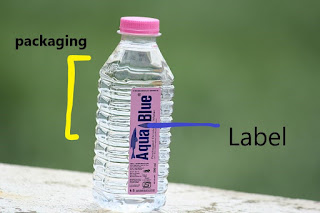Consumer products consist of 1) Convenience products (products which are easily and readily available at your convenience like coca cola at your nearest retail store). 2) Shopping products (products which are bought on the bases of quality, price and design for e.g. cars, furniture or home appliances. 3) Specialty products which are highly targeted meaning "Niche" target market. They are expensive products for e.g. designer clothes, expensive cell phones. 4) Unsought products (kind of products which customers are not even sure that they need it or not e.g. life insurance or funeral services).
Industrial products another type of consumer products consists of 1) Capital items (which helps the productions or operations e.g. office is compulsory to create a strong image and yet it can also help to take the order and expand the business). 2) Materials and parts (parts which are sold to make further products like cement, wheat, bricks). 3) supplies and services (include supplying the products, maintenance of machinery and running the industry)
Individual product and services consist of a diagram which starts at Product Attributes and ends at product support services 1) Product attribute means the quality, features, and specialty of a product. To maintain the quality, we run some quality test like quality level (ISO certification) and TQM (Total quality management) and how to eliminate those processes which don't create value (lean six sigma) or re-using the waste. Difference between style and a design is that style talks about the outer appearance of a product and design talks about the specifications and more detailed version of the style.
 |
| Style, design, label, and packaging |
A brand is something which differentiates a product/service from the competitors one. It can be a sign, symbol, design, color, packaging, jingle, and tagline. The best example to make it more memorable is just seeing a product right in front of you and see how can you identify it. Equity is a sum of assets and liability. Brand equity is defined by two authors Kevin Lane Keller and David Aaker.
Keller talks about consumer-based brand equity and Aaker talks about firm’s equity. Keller definition is written in the book but Aaker definition of brand equity is the sum of assets and liabilities associated with a company’s brand. Packaging consist of designing and wrapping a particular product and labeling is to convey a descriptive meaning to the consumer about a product. Lastly, we talk about the creation of value in the process of augmentation.
The product line is set of products which have the same characteristic and are in same SBU. Their SKU’s are different but are sold to the same customer and have the same IMC. Product line length is the number of products in one product line. Like coca cola have 24 different types of flavors. So 24 is the product line length. The product mix is the portfolio of a company. It consists of all the SBU’s of a company.
Branding strategy talks about the brand positioning (product attribute and clearly define your USP so that customer can easily position your product in their mind. Positioning can also be done through the process of value creation. Brand naming criteria is to select a brand name which tells about the quality of your company (daraz.pk) easy to pronounce not like Italian or French brands. Make sure when you expand your brand make sure brand name should not carry a bad meaning in other countries language. It should be protectable and licensed. Brand sponsorship consists of 1) Manufacturer brand (who is producing the product, like coca cola, national brands) 2) Private brands (Retailers create their own brands like Morrison muffins or Hyperstar French bread, it is branded under their own brand. 3) Licensed brand ( like McDonald's toys are licensed by them and cannot be used by their competitors). 4) co-branding, where two companies merge themselves for a limited amount of time to work on a specific project like Sony and Ericson. Learning part over here is the price war and competitive war between manufacturer brands and private brands. Because retailer wants to sell his product more than the manufacturer brand just because of more profit margin. Lastly is brand development where we already discussed about the category extension(brand extension), product line extension, multi-brands like P&G have different types of diapers in one product line and lastly New Brand (first time introduced in the market and is launched in the different category).
Last part is about Services, services can be categorized into 4 parts 1) Intangibility: where you can touch a service, 2) Inseparability: where you cannot separate a service from its provider, in the hotel, you cannot take out the bed from the hotel if you want to sleep. 3) Variability: In the service industry, the human part is involved, that is why there is no consistency in it. It is variable depending upon the service provider’s mood. And lastly Perishability, you cannot store a service like we can store a product.
? What is a PPC Specialist: The Art of Making Complex Things Simple A PPC specialist is an expert in pay-per-click advertising. They need to have a well-rounded set of skills. PPC campaigns involve soft sciences, hard sciences, and creativity. If you can apply psychology, math, and art on a consistent basis, you can be successful with PPC. As a critical thinker, a PPC specialist effectively plans campaigns, solves problems, and ultimately generates profit for the business they’re promoting.
ReplyDelete